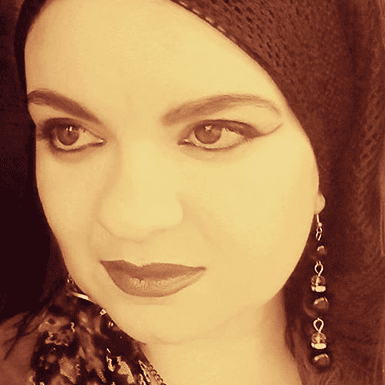In The Book of Disappearance, Palestinian novelist Ibtisam Azem has crafted a masterpiece which immediately leads the reader to ponder the historical foundations of the 1948 Nakba, as well as the Zionist intentions and ethnic cleansing of Palestinians from the land where they belong. In a fictional narrative that hovers between the past and the present, Azem seeks to answer a hypothetical question: what if all Palestinians living in Israel simply disappeared? In this novel, all Palestinians in Israel do disappear unexpectedly and without any explanation.
The narrative revolves around Alaa, a freelance Palestinian cameraman, and Ariel, an Israeli settler and journalist; both live in the same block of flats and are friends. Alaa’s grandmother, a survivor of the Nakba, has died. For Alaa, his grandmother represents a link between the rupture of what he calls the “two Jaffas”. Ariel considers himself a liberal and questions Israel’s military occupation, albeit within limits; as the book progresses, we see a character who has normalised the Israeli narrative and is willing to participate in the appropriation of Palestinian memory.
Alaa records his reflections and reminiscences in notebooks which he leaves behind when he disappears with all the other Palestinians living in Israel. As Israelis go through a myriad of reactions to the unexplained phenomenon – important services are disrupted, Palestinian prisoners have disappeared, the perpetual narrative of security concerns takes centre stage – the book charts recollections of the Nakba and how Israelis, notably Ariel, relate to the ethnic cleansing of Palestine.
Furthermore, what happens to Palestinian history and memory if their guardians disappear?
Making Mirrors: Writing/Righting by and for Refugees
While growing increasingly conscious of Palestinian memory of the Nakba, Alaa also recognises the prevalence of its rupture. Of his grandmother’s memory, he writes, “Sixty years later and you would still feel a tightness of breath when you talked about the Nakba, your Nakba and Jaffa’s.”
However, most of Alaa’s questioning of memory is imparted to the reader after he disappears. In what represents the earlier settler-colonial presence on Palestinian land and territory, Ariel transitions from friend to appropriator of his friend’s apartment. From searching for clues to making himself comfortable in Alaa’s lodgings, Ariel gradually moves closer to the colonial presence he had previously questioned. Alaa’s memory, preserved in notebooks, is now jeopardised.
Palestinian memory is threatened repeatedly. From Alaa’s writings, we can discern the differences in discourse about Palestine. His grandmother, we are told, used to speak “of ‘that year’ and what happened before and after ‘that year’”, with reference to the Nakba. Of his grandmother and Palestinian memory, Alaa writes, “Your memory, which is engraved in my mind, has all these holes in it.”
With the disappearance of all the remaining Palestinians, an even greater gap is created, one that risks the manipulation of Palestinian collective memory in ways reminiscent of the Nakba. The Israeli settler-colonial transition from shock to appropriation is palpable, intensely so. The colonial project now appears to be complete and houses previously inhabited by Palestinians are now seen as opportunities for a complete land grab. The author evokes the historical dispossession of Palestinians in contemporary society and the way that the assimilation of the Zionist narrative is prevalent in the settler-colonial state.
Assad or We Burn The Country: How One Family’s Lust for Power Destroyed Syria
The absence of Palestinians is no longer a preoccupation among the settlers. This reflects how, during the Nakba, the ethnic cleansing of Palestinians to pave the way for colonial expansion was also normalised as a necessity, including the need to justify the myth of the “barren land” awaiting “a people without a land” to make it fertile.
Ariel is no exception. From seeking clues to Alaa’s disappearance, he transitions quickly into an overt settler-colonialist who justifies his presence in Alaa’s apartment through the mundane. “He is too tired to go up to his apartment on the fourth floor,” we are told, and yet the real reason behind this shift is that Alaa’s absence evokes Zionists’ false entitlement and claims to all Palestinian possessions.
The absence of all Palestinians as portrayed in this novel is the colonial entity’s ultimate aim. Inasmuch as the novel hankers back to the past to portray the Palestinian and Israeli psyches, it also evokes the disparity between the colonised and the coloniser, which is displayed most prominently in the way that the author decides to leave the disappearance unresolved. At the end, the Israeli settler-colonialists are not preoccupied with the mysterious elimination of Palestinians — which is never explained — but, just as in real life, they are obliterated from the narrative, and the Zionist presence and colonial decisions prevail.
Having moved into Alaa’s flat and discovered his notebooks, Ariel commits a final act of betrayal against his one-time friend that sums up the Israeli narrative: what do we do with a Palestinian narrative that has been left without its narrator? Zionist history is replete with such moments and Ariel’s disappearance is no exception. A contemporary theft of narrative ties in seamlessly to the past.
Ariel casts friendship aside the moment that Alaa’s absence is confirmed. Earlier in the book, it is explained about Palestinians that, “All the Jaffans who stayed here see a shadow walking next to them when they walk through the old city.” For Palestinians, the past and their ancestors are intertwined with their own existence. Meanwhile, the settler-colonial society which historically celebrated the massacres of Palestinians is, in Azem’s hypothetical setting, just a step closer to confirming the fulfilment of “Greater Israel”.









